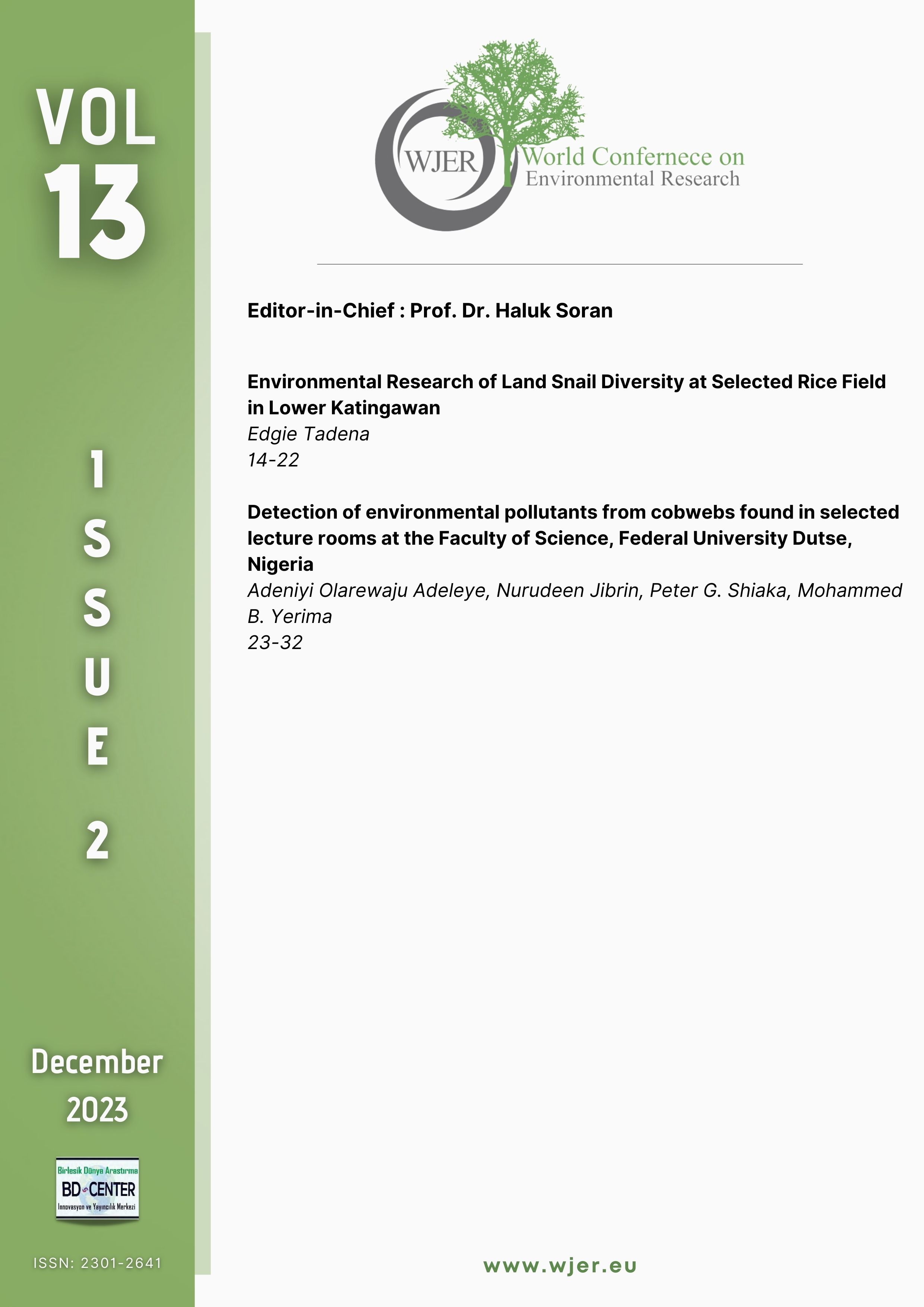Detection of environmental pollutants from cobwebs found in selected lecture rooms at the Faculty of Science, Federal University Dutse, Nigeria
Main Article Content
Abstract
The aim of this study was to assess the environmental pollutants present in the cobwebs found in selected lecture rooms; Mathematics lecture room (MTH), Chemistry lecture room (CHM), Biology lecture room (BIO) and Environmental Science lecture room (EMT) in the Faculty of Science, Federal University Dutse. Bacterial pollutants coupled with Arsenic (As) Lead (Pb) in the sampled cobwebs were isolated and identified using standard procedures. One-way Analysis of variance was used to determine the variation in the concentrations of Pb and As in the sampled cobwebs. Staphylococcus aureus (28.1%), Bacillus sp. (37.5%), Streptococcus sp. (18.8%), and Streptobacillus sp. (15.6%) were detected in all the cobwebs samples. MTH 4 had the highest Pb concentration (1.2800 mg/kg) while CHM 3 had the lowest (0.470 mg/kg) Pb concentration. CHM 3 and BIO 3 had very low concentrations of Pb, which were significantly different from each other (p˂0.05). This study has revealed that spider cobwebs can be an effective bio-indicator in determining indoor air quality.
Keywords: Indoor air, Cobwebs, Lecture rooms, Bacterial contaminants, Lead, Arsenic
Downloads
Article Details

This work is licensed under a Creative Commons Attribution-ShareAlike 4.0 International License.
World Journal of Environmental Research is an Open Access Journal. All articles can be downloaded free of charge. Articles published in the Journal are Open-Access articles distributed under Attribution 4.0 International (CC BY 4.0)
